
Popularly Known as
Yogiji Maharaj
Religion
Hindu
Native
Dhari
Country
India
Shradhanjali By
Nilesh Mathur
Biography of Yogiji Maharaj
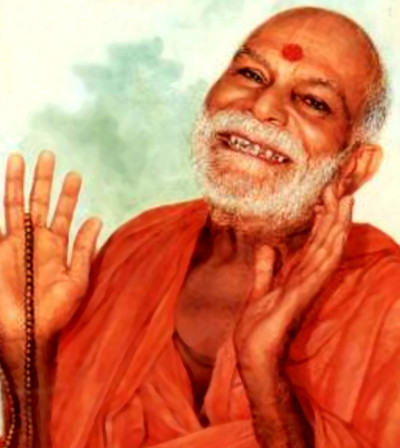
Yogiji Maharaj was the fourth spiritual successor. He was initiated into the sadhu-fold at the age of 16 and named Sadhu Jnanjivandas. But so transparent was the mystical joy within him, that he was fondly called Yogiji. Devotion, service, tolerance, penance, humility and countless such virtues flowered within his fragile frame. Living singularly on the word of his Guru Shastriji Maharaj, Yogiji Maharaj won the love of one and all. He witnessed abundant divinity in everything and everyone - he even blessed those who censured him and praised those who persecuted him. With a vision set far into the future, Yogiji Maharaj established children and youth centers. He inspired Satsang activities in every town and village he visited, repeatedly writing words of guidance and encouragement to each newly formed group. The mandirs and centers he created resounded with the energy of the young. His lectures were addressed to bright, young college students, for he believed in these youngsters. He encouraged music, art and literature. Scores of youths regularly traveled with him, savoring his selfless love and knowledge. It was he who lifted the Sanstha to international proportions by touring through East Africa and England to establish new centers. His efforts have mushroomed into the worldwide socio-religious organization we see today.
- Birth of Jinabhai
In the small town of Dhari in the Amreli District of Saurashtra there lived a devotee by the name of Devchandbhai Vasanji of the Lohana community. Jethabhai, the grandfather of Devchandbhai, was a blessed devotee of Shriji Maharaj.
Yogiji Maharaj, the son of Devchandbhai, was born in Dhari on 23 May 1892 (Vaishakh vad 12, V.S. 1948). His mother’s name was Puribai. His childhood name was Jinabhai, but his parents lovingly called him ‘Jina’. Jina was loved by everyone. All were captivated by his handsome, shining face.
When Jina was a child, his mother took him with her to the cotton farm every day. Other women of the village who came to pluck cotton also brought their children with them. The women would leave their children under the shade of a tree, before commencing their work in the fields. Sometimes their children, failing to see their mothers, would cry loudly. This infuriated the farm owner. He scolded the women daily, “Why do you bring your wailing children to my farm?”
The farmer, however, never became angry with Jina’s mother. Looking at Jina, the owner always remarked, “Jina is a miracle child. Look, he always sucks his toe, just as Shri Krishna did. Puribai, one day everybody will fall at his feet. They will worship him.”
Gradually, Jina grew up and he was popularly called Jinabhai. Jinabhai, though young, had a strong liking for simplicity and cleanliness. He enjoyed nothing more than to engage in bhakti and singing bhajans.
- Jinabhai in Meditation
There is a confluence of three rivers on the outskirts of Dhari. The place of confluence is known as Triveni Sangam, and the resulting river is called the river Shetrunji. The Shetrunji narrows on reaching a bridge, and shrinks to the size of a small rivulet under the bridge. The inhabitants of Dhari call it Patalio Jharo.
Jinabhai used to have his daily morning bath at this spot near the bridge. He would wear clean clothes after his bath and then sit in an upright posture and perform meditation for hours together. He meditated upon the divine form of Shriji Maharaj. To the many who saw Jinabhai seated in meditation at such a lonely place, it seemed as if Dhruv himself was meditating! They invariably stood and watched the young Jina engrossed in meditation.
Sometimes, friends of Jinabhai would come to have their bath at Patalio Jharo. They were amazed to find Jinabhai rapt in meditation. They would wait for him till he came out of his meditation and then enquire, “What were you doing?” And Jinabhai would reply, “I was remembering God. You also sit with me to meditate. I will teach you how to meditate.”
From his childhood Jinabhai never failed to do his meditation every morning. He advised everybody to start their daily work only after remembering Shriji Maharaj.
- Jinabhai's Courage
Jinabhai was studying in the fifth standard. Tribhovandas was the headmaster of his school. He was a very hot-tempered man. One day, Tribhovandas severely thrashed a boy named Chandu. Jinabhai could not bear to see the boy suffer. He felt pity for Chandu, who was innocent of any wrongdoing. Jinabhai started chanting ‘Swaminarayan, Swaminarayan’. Chandu screamed with pain. Tribhovandas continued thrashing him until he fell down unconscious. The children ran helter-skelter out of fear of the teacher. Later, Chandu died as a result of the severe beating. Chandu’s father reported the case to the inspector, and an inquiry was opened. The inspector came to the school to investigate. But who would dare to bear witness against the headmaster?
The inspector asked all the students in the class. But who would be bold enough to report the truth? Jinabhai always spoke the truth. Why be afraid of speaking the truth? Jinabhai was not at all afraid of the headmaster. So, he boldly addressed the inspector, “Our headmaster mercilessly beat the innocent Chandu. He grabbed him by the arm and bashed him to the ground.”
When Jinabhai spoke up, all the other students gained courage and shouted with one voice, “Yes sir, it was the headmaster who beat Chandu.” Looking closely at the forehead of Jinabhai, the inspector saw the holy tilak-chandlo mark. Innocence and honesty were written on Jina’s face. He believed Jinabhai and immediately dismissed the headmaster. He also rewarded Jinabhai with a prize for fearlessly speaking the truth.
The truthful always triumph. Therefore we should not be afraid of telling the truth. We should form a habit of speaking the truth from early childhood.
- An Ideal Student
Jinabhai was very clever in his studies. He always stood first in every class and won many prizes.
Sometimes dull or lazy students would sit beside Jinabhai, hoping to copy his answers. Some bullies would threaten Jina, “When you have solved all the questions you had better tell us the answers.”
Jina would laugh and, to merely please them, say, “Alright, I will tell you. I will tilt my slate so that you can see everything I have written.”
Whenever the teacher set any problem, Jinabhai would solve it immediately, and then turn his slate upside down. Those around him who had neglected their previous lessons, would ask in a whisper, “What is the answer?” But Jinabhai would remain silent.
One day some of the boys threatened him, “Jina, show us your slate, otherwise we will beat you up.”
But Jina fearlessly replied and explained, “You work it out! If my answer is wrong, then your answer will also be wrong.”
Whenever other students succeeded in copying his work, Jinabhai did not like it. He would tell them off, “It is wrong to copy. By copying you are cheating God.”
Thus, Jinabhai always insisted that everyone should learn by working hard, and should not cheat.
- Use of Leisure Time
At two o’clock in the afternoon there was a 30 minute recess for the class. During this time the students played games like kho-kho, hide and seek, chase and catch, and amli-pipli. Jinabhai was not interested in playing games. He preferred to spend his time in prayer. So, while his friends and other children played games, Jinabhai prayed to God in a quiet corner or under a tree.
The boys often wondered, “What is Jina doing?” The teachers, too, would ask his friends, “What does Jina do while others play?”
One day, two teachers saw Jina while he was meditating under a tree and asked, “Jina, you don’t play any games. You meditate on God all day. You are not interested in the affairs of this world, so why don’t you become a sadhu?”
“Yes, I will become a sadhu,” replied a determined Jina. So saying, he resumed his prayers. How could the teachers of Jinabhai know at the time that Jinabhai would really become a sadhu and become famous throughout the world.
Jinabhai did not like to waste his free time. He only liked to offer worship. We, too, should not waste time and should offer devotion to God.
- Worship of The Lord
For many years Jinabhai’s uncle, Mohanbhai, had been performing the daily worship and service of the murtis in the mandir at Dhari. But due to old age and ill health, he could no longer look after the mandir properly. He thought, “It would be nice if some good devotee could be found to perform this service.” His eyes fell on Jinabhai.
He asked Jinabhai if he would take up the mandir duties. Jinabhai was overjoyed, and assured him, “Mohankaka, do not worry, I will serve Thakorji.”
From that day Jinabhai assumed the mandir responsibilities, and engaged himself in the service of God. He would bathe the murtis lovingly, apply sandalwood paste and a kumkum chandlo, light the divo and incense sticks and perform the arti. His heart overflowed with joy while offering devotion to God.
Besides all this, he would draw water from the well and water the plants in the compound of the mandir. Within a short time the garden in the mandir was filled with the sweet fragrance of flowers. Every morning Jinabhai made garlands of flowers of various colours for the murtis. He would prepare a variety of delicacies to offer to God. He would serve the murtis as if God himself was physically present. Quite often, he even conversed with the murti.
In the mornings and evenings, he would bring his friends to the mandir. There, he taught them how to chant the ‘Swaminarayan’ mantra. He used to sing bhajans and asked others to sing with him. He taught them how to perform arti and also how to prostrate before the murtis. Before they left he would give them prasad.
- Initiate me as a Sadhu
Now Jinabhai passed his days and nights in the mandir. He worshipped Maharaj with single-minded devotion. Jina would also serve visiting sadhus during their short stays in Dhari. All of them were pleased with his service and would bless him. At school, Jinabhai passed the Standard VII exams. At that time, Krishnacharandas Swami, along with his group of sadhus visited Dhari from Junagadh. On seeing the sadhus, Jinabhai was extremely pleased. He was in their service from early morning till late night. He would get up early in the morning and have his bath. After completing his morning prayers he would attend to the needs of the sadhus. He helped them by drawing water from the well for their bath. He would sweep the mandir floor, and neatly arrange the mats for the sadhus to sit and meditate upon. He lovingly served them all throughout the day.
Sadguru Krishnacharandas Swami was a blessed disciple of Gunatitanand Swami, the incarnation of Aksharbrahma. He saw that Jinabhai, though often very tired, still completed his daily duties and services at the mandir. He was pleased to see the devotion of Jinabhai, and appreciated the zeal with which he served.
One morning, while giving prasad to Jinabhai Swami asked, “Jina, would you like to become a sadhu?” Jinabhai was filled with joy at Swami’s question. He replied eagerly, “Yes Swamiji, I would be happy if you would make me a sadhu. It is my only wish. For many days I have been hoping to talk to you about it. But today, you yourself have read my mind. Swamiji, please initiate me as a sadhu. I want to become a sadhu and serve you and Maharaj.”
Swami Krishnacharandasji blessed him and said, “Your wish will be fulfilled.”
- Jinabhagat in Junagadh
A year later, Jinabhai obtained permission from his parents to become a sadhu. Mother Puribai prepared kansar and served her son for the last time. Applying a chandlo to his forehead, and wishing him fulfilment in his new life, she gave him a proud but sorrowful send off. On 1 November 1908 (Kartik sud 7, V.S. 1965), Jinabhai left home. He set out for Junagadh. On the way he was accompanied by his elder brother, Kamalshibhai. The very next day, they met Krishnacharandas Swami.
On 8 November 1908 (the full moon day (Punam) of Kartik, V.S. 1965), Jinabhai was given the parshad diksha by Krishnacharandas Swami. He was then given the name Jina Bhagat. Jina Bhagat immediately took on various duties at the mandir.
In those days the parshads were entrusted with the task of grazing the cows and buffaloes of the mandir. Jina Bhagat would go along with the other parshads to the foot of Mount Girnar to graze the cattle. While the cattle grazed, Jina Bhagat sang bhajans, and memorized Swamini Vato.
In the evening, Jina Bhagat would return to the mandir along with the cattle. On the way back he would cut and gather babul sticks, used for brushing teeth in the morning, for all three hundred sadhus in the mandir.
Besides this, every morning he cleaned the cowsheds and collected cow-dung. He would then make little flat cakes out of the dung and placed them in the sun to dry. They were then used for fuel.
In spite of fatigue from the day’s work Jina Bhagat always attended the satsang assemblies every evening. He would sing bhajans and chant the Swaminarayan mantra. Then he would stay and listen to the discourses till late night. Every morning he would get up at four to serve his guru once again. Such was his daily routine.
He earned the blessings of Krishnacharandas Swami by serving him devoutly for six months.
- Jaga Bhakta Appears in a Dream
During those days, Krishnaji Ada and Pujaji Bapu (disciples of Jaga Bhakta) were frequent visitors to Junagadh. Jina Bhagat listened to their discourses. Krishnaji Ada narrated many incidents about the greatness of Jaga Bhakta. Day after day Jina Bhagat heard about the spiritual glory of Jaga Bhakta.
Once, at night, a thought came to him, “How great Jaga Bhakta must be!” With this thought he fell asleep. During his sleep, at two o’clock in the morning, he had a wonderful dream. He dreamt that Jaga Bhakta was standing before him, wearing a dhoti and a white turban on his head. Jina Bhagat immediately prostrated before Jaga Bhakta, and addressed him saying, “Guru, today you have fulfilled my wish by giving me your darshan. I am overjoyed. Please say a few words of wisdom.”
Jaga Bhakta replied, “You should keep two guidelines in mind. The first is to form a habit of reading the shastras and the second is to keep the association of holy sadhus.” Then Jina Bhagat again prostrated before Jaga Bhakta in his dream.
The habit of reading shastras means daily reading of the Vachanamrut, Swamini Vatu, Shikshapatri, Bhaktachintamani, Harililamrut, etc. with reverence, and applying the wisdom contained in them. Contact of revered sadhus means seeking the company of a God-realized Sadhu such as Shastriji Maharaj.
We must also cultivate these two habits and thus strive to achieve inner fulfilment.
- First Meeting
Jina Bhagat belonged to a group of sadhus led by Krishnacharandas Swami. Once, the group went to Rajkot.
One day, Shastriji Maharaj also arrived in Rajkot. He stayed at the house of Krishnaji Ada. When Jina Bhagat heard this news, he felt a strong desire to have the darshan of Shastriji Maharaj. So, early in the morning, under the pretext of going for a bath in the Aji river, Jina Bhagat and three other sadhus went to the house of Krishnaji Ada.
When Shastriji Maharaj awoke at four o’clock, Jadavjibhai informed him that some sadhus had come for darshan. Shastriji Maharaj went to the room in which the sadhus were waiting. Jina Bhagat and the other sadhus paid homage to Shastriji Maharaj and then presented to him a mala and a tumbdi, which had been used by Aksharbrahma Gunatitanand Swami. Shastriji Maharaj was greatly pleased.
Jina Bhagat could not take his eyes off Shastriji Maharaj and looked at him with great reverence. Shastriji Maharaj, too, looked at Jina Bhagat with much affection.
Jina Bhagat thought, “Shastriji Maharaj is worthy of being a guru.” And he mentally accepted Shastriji Maharaj as his guru.
Thus, on 23 August 1909 (Shravan sud 7, V.S. 1965), Jina Bhagat met Shastriji Maharaj for the first time. It was like a river meeting the ocean.
- I Am Only a Servent
After staying for some days in Rajkot, Swami Krishnacharandasji and his group of sadhus resumed their tour of the villages. In the course of their tour they visited Hajdiyala near Sardhar. There was no Swaminarayan mandir in the village, and therefore the sadhus rested at the community hall of the village.
It was afternoon. The sadhus, following the afternoon sermon, retired for a short rest. Jina Bhagat, after completing his duties also lay down for some rest. A Rajput devotee, who was an expert in astrology and palmistry, was struck with wonder when he saw the soles of Jina Bhagat’s feet. He had never seen such extraordinary lines on the feet of any sadhu before.
Thus, when Jina Bhagat got up and welcomed him, the Rajput devotee exclaimed, “O Jina Bhagat! You will be a great sadhu one day. People in their thousands will follow you. They will pray to you to earn your favour and blessings. Shriji Maharaj will be your constant companion. There are urdhvarekhas on your soles. Holy men with urdhvarekhas are extremely rare. They are the sacred signs possessed by a sadhu who has a constant rapport with God.”
On hearing these words, Jina Bhagat at once covered his feet and said, “Don’t talk like that. I am just a servant. Krishnacharandas Swami is a great sadhu. Please never speak about this to anybody.”
But the devotee could not remain silent. He at once disclosed his thoughts to Krishnacharandas Swami. Swamiji smilingly said, “Yes, he possesses all the qualities of a great sadhu.”
- Austere Jina Bhagat
The King of Mengni was a great devotee of God. At his request, Krishnacharandas Swami visited Mengni every year to celebrate the Annakut festival.
One year, however, the King of Lodhika invited Swamiji to celebrate Annakut in Lodhika. The king was also a staunch devotee. He provided all the raw materials for the celebrations. From morning till evening, the sadhus and parshads devoutly prepared the various sweet and savoury delicacies for the festival. When the day of Annakut arrived, a grand festival was held. The delicacies were first offered to God. At the king’s order a meal with sata and jalebi were ready to be served to everyone.
Jina Bhagat used to fast some days in the month. Realizing that such delicious sweets like sata and jalebi will be served on that day he decided to observe a fast. All the sadhus went for lunch, except Jina Bhagat.
When the king heard that Jina Bhagat was fasting, he pleaded with him saying, “Today is a festival day. You should not fast today, so please eat.” Jina Bhagat politely refused. The king repeated his request several times but Jina Bhagat told him, “I have a stomachache and am not hungry, so I do not want to eat anything.”
The king then appealed to Krishnacharandas Swami, “Please tell the young Jina Bhagat to eat.” So Swamiji asked Jina Bhagat not to fast that day. But he gave the same reply to Swamiji, and did not eat. Thus, despite such tasty delicacies, Jina Bhagat fasted.
Krishnacharandas Swami was inwardly pleased that Jina Bhagat was not tempted even by the tastiest of sweets to break his fast. He praised his austerity and self-control. That night he called Jina Bhagat and placed his hands on his head, and blessed him. He advised the other young sadhus to cultivate the same virtues of austerity and self-restraint as Jina Bhagat.
- Krishnaji Ada's Blessings
In Vartal, on the morning of 11 April 1911 (Chaitra sud 13, V.S. 1967), Acharya Shripatiprasadji Maharaj gave Jina Bhagat the bhagwati diksha. Jina Bhagat was renamed Sadhu Gnanjivandasji. But the sadhus and devotees fondly called him ‘Yogi’, while Krishnacharandas Swami called him ‘Gnanji Swami’.
On 7 June 1911 (Jeth sud 11, V.S. 1967), after celebrating ekadashi, Sadhu Gnanjivandasji, along with seven other sadhus, left the Junagadh mandir to join Shastriji Maharaj to help promote the true philosophy of Akshar and Purushottam, as taught by Bhagwan Swaminarayan in the Vachanamrut.
It was on Saturday, 4 October 1911 (Aso sud 11, V.S. 1967), that Krishnaji Ada breathed his last. Bidding his last ‘Jai Swaminarayan’ to Shastriji Maharaj and other sadhus he asked, “Where is Gnanji Swami? Call him here.” Gnanji Swami (Yogiji Maharaj), who was sitting in the corner, prostrated before him and then came and stood respectfully by his side. Krishnaji Ada asked him to come nearer; and when he did, he placed his hands upon his head, and blessed him.
Nirgundas Swami remarked, “Gnanji Swami! It is not Krishnaji Ada who is blessing you, but believe that Bhagatji Maharaj and Jaga Bhagat are blessing you.”
Because of his great love for all, Krishnaji Ada’s eyes welled up with tears. Then bidding ‘Jai Swaminarayan’, his last farewell, he left this world for Akshardham.
- The Desireless Sadhu
Yogiji Maharaj was absolutely without any desire. Though he was young, he never wanted anything for himself. All day long he would remain engaged in spiritual discourses, singing bhajans, memorizing scriptures and serving others.
Once, Yogiji Maharaj was with a group of sadhus in Bhavnagar. They were staying at the house of a staunch devotee. This house was situated on a main road. It was evening and Yogiji Maharaj was on the upper floor of the house reading the Swamini Vatu.
Down below, people were eagerly awaiting the king’s wedding procession. The procession was to pass along the main road. Both sides of the road were crowded with onlookers. Windows and balconies were also full of eager spectators. From a distance, its drums and clarinets could be heard.
Suddenly, a devotee got up and approached Yogiji Maharaj and said, “Come on, why are you seated here? The king’s wedding procession is here. It is worth seeing. Come to the window – don’t you want to see it?”
Whereupon Yogiji Maharaj replied, “Of what consequence is it for us sadhus? Of what use is it for us to see such things? Once we have renounced something, why let it re-enter our heart?” The devotee was amazed by his reply and spirit of renunciation. He bowed down at the feet of Yogiji Maharaj.
Due to this spirit of service and other saintly virtues the veteran sadhu, Narayandas Swami of Junagadh, thrice sent the message, “Gnanji Swami, if you return to Junagadh, I will myself come down to Jetpur from Junagadh to welcome you, and bring you here in a grand procession.” But Gnanji Swami stayed with Shastriji Maharaj to help him accomplish many noble tasks.
In Rajkot, Yogiji Maharaj unintentionally made a small mistake. Vignandas Swami became very angry and ordered Yogiji Maharaj to leave his unfinished meal as punishment. Hargovind Mehta of Vadhwan witnessed this scene, and in the afternoon privately asked Yogiji Maharaj, “Yogi! Why do you tolerate so much? Don’t you feel like leaving here and going home?” Yogiji Maharaj replied happily, “When the guru scolds it is for our good. Without punishment we would not remain alert. It helps us to correct our mistakes.”
Hargovindbhai was amazed at his reply and fell at the feet of the young sadhu in recognition of his patience and humility.
- Indifferent to Insult
Now Yogiji Maharaj was known to belong to Shastriji Maharaj’s group. While touring the villages with the sadhus, Yogiji Maharaj arrived in the village of Keriya. They stayed in the village mandir. Some resentful sadhus, who were not on friendly terms with Shastriji Maharaj, heard that the sadhus of Shastriji Maharaj had put up in the mandir.
It was afternoon and, except for Yogiji Maharaj who was fasting that day, all the sadhus were having an afternoon nap. Meanwhile, the resentful sadhus came to the mandir. At once, they flung the clothes and other belongings of Shastriji Maharaj’s sadhus out of the mandir and broke their water pots.
They saw that Yogiji Maharaj was the youngest, so they caught hold of him and pushed him out of the mandir. “Call your Gunatit, and see if he can save you,” they shouted, and then banged the blind sadhu Bhagwatswarupdasji against the grills.
Another sadhu was violently pushed aside into a corner. Others were beaten severely, while Vignandas Swami was locked up behind the grills.
The villagers came to know about the sudden unrest. They hurried to the mandir with sticks in their hands. They threatened the intruders, and peace was quickly restored.
Though the sadhus opposing Akshar Purushottam had beaten and insulted them, Yogiji Maharaj and his fellow sadhus did not utter even a single word against them. They met the assault with a smile on their face. Their humility and saintliness was admirable.
- A Hard Working Sadhu
Yogiji Maharaj, though young excelled in service. From early morning to late at night, he remained busy in the service of others. He never tired. In fact, he never felt at ease in the absence of seva. Even during fasts he would serve others with the same enthusiasm and love.
Each day he would get up early in the morning, then after bathing and prayers, he would start cooking in the kitchen. He would cook 300 rotlas. He prepared and cooked the rotlas simultaneously on two separate hot-plates. Whilst cooking, Yogiji Maharaj would sing bhajans and recite Swamini Vatu. He used to cook everything by himself no matter how many people there were.
When the food was ready, he would call everybody to eat by hailing, ‘Vasudev Hare’. He himself served the food to all the sadhus and devotees. He was always the last to have his meal.
He also drew water from the well that would be required for cooking and for bathing by the sadhus and devotees. Everyday, early in the morning, he rinsed out all the big pots and vessels, and filled them with filtered drinking water.
Even after all this seva, he would also wash the utensils after the meals were over. Many times he would be found cleaning the huge pots till late at night. Yogiji Maharaj was an ideal of seva.
- A Real Sadhu
The sadhus visited village after village to teach the philosophy of Akshar Purushottam and a purer way of life. They cared not whether it was day or night. Wherever they went, they collected flour and cooked their meals from whatever they managed to get.
Once the sadhus had halted at a village called Sankarda. Every morning, they would go round the village to beg for alms. Yogiji Maharaj, accompanied by the blind sadhu, Bhagwatswarupdasji, would also go around to beg for alms. Holding one of his hands, he would lead Bhagwatswarupdasji along the road. A cloth bag for collecting the alms hung from Yogiji Maharaj’s shoulder. When anybody offered flour, grains, etc. he would empty it into the bag with the other hand. As he walked, he took great care that no stones, thorns or holes in the road got in the way of Bhagwatswarupdasji. After the morning round was over, he cooked whatever alms they had received. He first devoutly offered the food to God. Then, after serving the other sadhus, he would finally sit down to have his meal.
Karsansang Bapu of Adval often saw Yogiji Maharaj leading the blind and aged Bhagwatswarup-dasji while going round for alms. One day, he saw the barefooted Yogiji Maharaj begging for alms in the scorching heat of summer. He felt pity for him. He asked, “Yogiji Maharaj, why don’t you take a younger sadhu with you? How difficult it must be to be with such an aged sadhu while begging for alms!” Yogiji Maharaj, with a smiling face, replied, “Bapu, it is my good fortune to have such an aged sadhu with me. I am extremely fortunate for the opportunity to serve a revered old sadhu! Also, by moving about with him I get the benefit of his vast knowledge and experience. And, I also get a chance to serve the mandir by carrying the alms.” Karsansang Bapu heard these words of Yogiji Maharaj and mentally bowed to him with great respect.
Once, Yogiji Maharaj went to Narayan Dharo from the village of Mojidad, to bathe. There, a sadhu named Narayanprasad, wild with resent and envy, insulted and abused Yogiji Maharaj. Yogiji Maharaj merely smiled and chanted ‘Maharaj...Swami’, and after finishing his bath quietly returned to his residence without uttering a word in retaliation.
Some time later, when the monsoon had set in, this same sadhu, Narayanprasad, alighted from a train at Botad railway station at two o’clock in the morning. The cart driver refused to take him to Kariyani. Walking wearily along the muddy road, he came to the Akshar Purushottam Mandir at Sarangpur and knocked on the door. A thorn had lodged deep into his foot. Thus his foot was swollen, and he was in extreme agony. The watchman came and informed, “Yogiji Maharaj, a sadhu has come and wishes to stay for the night.”
Yogiji Maharaj went to receive him and brought him inside with courtesy. He then removed the thorn from his foot and dressed the wound. He lovingly fed him prasad of puri and ladoo. He made a bed for him, and gently asked him to rest. In the morning he kept a cart ready to take Narayanprasad to Kariyani. Narayanprasad recognized Yogiji Maharaj as the very sadhu he had insulted a few weeks before. He underwent a complete change of heart and thought, “Yogiji has served me with love even though I had insulted him. He has not said one word of rebuke to me. He has won me over completely with his great affection.”
Narayanprasad repented, fell at the feet of Yogiji Maharaj, and said, “You are a humble and loving sadhu because you do good to those who have harmed you. You are an ideal paramhansa of Shriji Maharaj, who repays animosity with love and affection.” Then receiving the blessings of Yogiji Maharaj, Narayanprasad left for Kariyani by cart.
- Mandir Service
Yogiji Maharaj enjoyed serving Thakorji and the mandir as much as he liked to serve the sadhus and devotees. When engaged in such seva, he would forget hunger and fatigue. He sincerely obeyed all the commands of Shastriji Maharaj. He served him and helped him in all his work.
Shastriji Maharaj built his first mandir in Bochasan, and consecrated the murtis of Akshar and Purushottam in the central shrine. After some time he also started building a mandir in Sarangpur. The work was in progress, but due to lack of funds, the sadhus and the devotees also helped in the construction of the mandir.
Yogiji Maharaj, too, after completing all his normal duties used to help in the construction work of the mandir. He carried large stones on his head for the masons to lay. He mixed lime and sand with a spade, and supplied the mixture. He assisted in digging and filling in the foundation. He was the youngest in age, but in service, he excelled everyone.
He had only one thought, “A mandir will be built, and the murtis of Akshar and Purushottam will be consecrated. How can one ever get such an opportunity to serve Maharaj! So, seize the opportunity and serve as much as possible, so that God is pleased.”
Shastriji Maharaj was much pleased with Yogiji Maharaj’s sincere service and loving nature. He frequently praised and blessed Yogiji Maharaj.
- Swami-Shriji Accepts Offerings
Jaljhilani Ekadashi was being celebrated at Sarangpur. Shastriji Maharaj was feeling unwell and was resting in bed. Some devotees from Bhavnagar had come there for the celebration. Afterwards, Kuberbhai, a leading devotee of Bhavnagar, requested Shastriji Maharaj, “Swami, please come to Bhavnagar so that we may all benefit by your association.”
Shastriji Maharaj replied, smiling, “I am not well. Take Yogiji Maharaj in my place. I am included in Yogiji Maharaj.” They were pleased with these words of Shastriji Maharaj, and returned to Bhavnagar along with Yogiji Maharaj.
Prabhudas Sheth invited Yogiji Maharaj and the other sadhus for lunch at his house. A pious Brahmin prepared a meal of ladoo, dal, rice, vegetables, etc. When the meal was ready, Jayantibhai, along with Prabhudas Sheth, approached Yogiji Maharaj and requested, “Yogiji Maharaj! You have won the favour of Shriji Maharaj and Gunatitanand Swami. Today pray to them on our behalf to accept the thal.”
Yogiji Maharaj smiled and answered, “Let us go and pray. Shriji Maharaj and Swami will surely come to accept the thal.” So saying, Yogiji Maharaj entered the prayer room. The thal was placed before the murtis. Silver cups full of water were also placed near the murtis. The curtains were then drawn. Yogiji Maharaj sat there and all around him sat the devotees. Yogiji Maharaj started singing, “Avinashi avo re...” with profound devotion.
After half-an-hour, when the curtains were opened, they gasped with wonder at what had happened. Five ladoos, dal and some rice had been accepted by Maharaj. The water cup was also half empty. All the devotees were struck by the power and devotion of Yogiji Maharaj. They were convinced that Yogiji Maharaj enjoyed the favour of Swami and Shriji.
- Devotion Par Excellence
Once Yogiji Maharaj and Nirgundas Swami were going to Gadhada from Sarangpur by bullock-cart. It was a hot summer’s day, and the road was deserted. There were neither any wells nor rivers on the route. It was already four o’clock in the afternoon.
Yogiji Maharaj had the small metallic murti of Harikrishna Maharaj (the murti of Shriji Maharaj formerly worshipped by Gunatitanand Swami). The time to offer water to Harikrishna Maharaj was fast approaching but as there was no water anywhere Yogiji Maharaj became worried and upset. “Thakorji must be very thirsty. Harikrishna Maharaj’s throat must be dry due to thirst,” he thought to himself.
It was six in the evening when they came to a river. Yogiji Maharaj asked the cart-driver to stop by the riverside. He took the murti of Harikrishna Maharaj, bathed it in the river and offered it filtered water to drink. Yogiji Maharaj was still not fully satisfied. He prostrated and prayed repeatedly before the murti, “O Maharaj! Please forgive me. I am at fault. Today, I have failed to give you water on time. Please forgive me.” On hearing this, Nirgundas Swami, who was standing nearby said, “What is your fault? We were travelling and couldn’t find any water on the way, and so we were late.”
Still, Yogiji Maharaj kept bowing to the murti repeatedly and prayed for forgiveness.
Words fail to describe the full measure of his service, devotion and humility.
- Snake Bite
A small memorial shrine had been constructed in Gondal at the place where the last rites of Gunatitanand Swami had been performed. It was called Akshar Deri. To add to its sanctity, Shastriji Maharaj started building a beautiful mandir over it. Yogiji Maharaj was stationed there at the time. Every day he used to get up early in the morning at four o’clock and perform puja of the charnarvind of Shriji Maharaj which had been consecrated there. He also performed the mahapuja and offered thal in the Akshar Deri.
While the mandir was being built, Yogiji Maharaj and other sadhus used to live in huts built of mud and bricks. Once at midnight, while Yogiji Maharaj was sound asleep, a venomous black cobra bit the index finger of his left hand. The sudden rush of pain woke him up.
As a result of the poison, the pain quickly spread through his whole body. However, Yogiji Maharaj did not complain. While chanting the Swaminarayan mantra his eyes closed.
Some anxious devotees suggested a physician be called. Others proposed various remedies. Meanwhile, Shastriji Maharaj arrived. When he heard about the snake bite he said, “Take Yogiji Maharaj to the Akshar Deri and chant the Swaminarayan mantra. The effect of the poison will vanish by the divine power of the Swaminarayan Mahamantra.” Immediately, the sadhus lifted Yogiji Maharaj and carried him to the Akshar Deri and started chanting the holy name of Bhagwan Swaminarayan. After exactly twelve hours, the effect of the poison subsided. Yogiji Maharaj opened his eyes and bowed to Shastriji Maharaj. Just then, a government doctor arrived. He was amazed to see that the effect of the poison had been nullified by chanting the Swaminarayan mantra. He fell at the feet of Shastriji Maharaj. The King of Gondal and his officers were also surprised at the divine power of the Akshar Deri. They were convinced that it was a highly sanctified place.
- Head of Akshar Mandir
It was the year 1934 CE (V.S. 1990). Most of the construction work of the Gondal mandir (also called ‘Akshar Mandir’) had been completed. In the same year, on 24 May 1934 (Vaishakh sud 10), Shastriji Maharaj ceremoniously consecrated the murtis of Akshar Purushottam in the mandir in traditional Vedic style. After the function, an assembly of all the devotees was held in the compound of the mandir. Here in the presence of thousands of devotees Shastriji Maharaj appointed Yogiji Maharaj as the Mahant of the Akshar Mandir and garlanded him. The whole congregration greeted the choice with joy and acclaim.
To Yogiji Maharaj the Akshar Mandir and Akshar Deri meant everything in life. The Akshar Deri was dearer to him than his soul. He was never tired of performing pradakshinas of the Deri. He would get up early at 3.30 am and sweep the floor of the Deri. After performing puja of the charnarvind with sandalwood paste and flowers, he would perform arti. Then he gave spiritual discourses to the devotees. He also performed mahapuja in the Deri regularly. During the mahapuja he prayed whole-heartedly, “May the number of sadhus increase and may the Satsang spread.” During his free hours he kept the accounts of the mandir himself, and maintained the ledger. Yogiji Maharaj looked after the maintenance of the mandir and himself attended to the needs and the comforts of the guests. The greater the number of visitors the happier he would be. He never allowed any visitor to leave without eating.
Rana Daji Bapu assisted him in many of his duties. One day, Daji Bapu wanted to consult Yogiji Maharaj about the mandir accounts. He searched for him in the kothar, but did not find him there. Thinking that he might be in the Akshar Deri or upstairs in the mandir, he went there to look for him. But he was not there either. After searching for him everywhere, he finally went to the kitchen where he found him cooking, all by himself.
Seeing the mahant of such a big mandir working like an ordinary cook in the kitchen, he said, “I have been searching for you for a long time. Why are you cooking? Where is the sadhu who cooks daily?”
Yogiji Maharaj quietly replied, “The sadhu who cooks is ill. By Maharaj’s grace, today I have got the chance of this service. For a long time I had wanted to prepare food to serve Thakorji. So, today I have got the opportunity.”
Hearing these noble sentiments, Bapu admired Yogiji Maharaj more than ever before. But when he enquired of the sadhu in charge of the kitchen, Bapu found that he was not ill at all. He and some other sadhus were loitering around and not doing their duty. He scolded them, “Yogiji Maharaj works day and night. Yet you make him serve in the kitchen as well.” He then sent them to the kitchen immediately. Along with Yogiji Maharaj, Bapu went to the mandir office to discuss the accounts.
- Devotion to Guru
Yogiji Maharaj used to eat only once a day. Moreover, every third day he observed a fast. Even when fasting in the scorching heat of the summer, he would carry all the luggage on his head while visiting villages in the company of Shastriji Maharaj. He would spend the whole day in the service of others. Owing to such incessant heavy work he developed a hernia.
In the year 1937 CE (V.S. 1993), Dr. Aspinol, an English surgeon at Rajkot Hospital, was consulted. After examining Yogiji Maharaj he said, “Swamiji, you will have to undergo an operation.” And so, on the instructions of Shastriji Maharaj, Hirjibhai reserved a special room in the Rajkot Hospital for Yogiji Maharaj.
At the time, Shastriji Maharaj was also under medical treatment in Gondal. Still, he came to Rajkot before the day of the operation. Though it was winter and very cold, Shastriji Maharaj, as usual, got up early in the morning, and after finishing his morning puja he put on his pagh and went to the hospital without delay. As he entered the hospital premises the attendants were taking Yogiji Maharaj on a stretcher to the operating theatre.
On seeing Shastriji Maharaj, Yogiji Maharaj was overcome with joy. He folded his hands in reverence. Shastriji Maharaj blessed him and Yogiji Maharaj was taken into the operating theatre. The doctor performed the operation very skilfully. When the operation was over, Yogiji Maharaj was carried back on a stretcher to his room in the hospital.
Yogiji Maharaj had brought the murti of Harikrishna Maharaj to the hospital and had placed it on a table in front of his bed. The devotees were all sitting on the floor around the bed. Shastriji Maharaj was sitting on a chair in front of the bed and was chanting with a mala in hand. After about two hours the effect of the anaesthetic subsided. Yogiji Maharaj stirred in his bed and opened his eyes. Shastriji Maharaj was sitting right in front of him and smiling softly. Immediately Yogiji Maharaj folded his hands in reverence and asked the devotees sitting nearby in a low voice, “Has milk been served to Shastriji Maharaj?”
The question came as a surprise to the devotees and to Dr. Aspinol. They felt, “This sadhu was not unconscious. This yogi must have been in a divine trance. Only then is it possible to remember the guru on waking.”
Yogiji Maharaj was, at the time, the personal attendant of Shastriji Maharaj at Gondal. There he served him milk and medicine daily. When he awoke the first thing he remembered was his duty to his guru. How unique was his devotion to his guru!
"Shastriji Maharaj is Still Manifest "
In the year 1951 CE (V.S. 2007), Shastriji Maharaj fell ill. One day he said, “I have performed the arti of the murtis for the Gadhada mandir. They will now be ritually consecrated by Yogiji Maharaj. There is not even a slight difference between me and Yogi. I am Yogi, and Yogi is me.”
These were his last words. On 10 May 1951 (Vaishakh sud 4), Shastriji Maharaj passed away to Akshardham. His body was cremated the next day. The devotees were in deep shock. They all thought, “Shastriji Maharaj has gone. Now what will happen to us?” No one knew what to do.
At that time Yogiji Maharaj reassured everyone, “Shastriji Maharaj has not gone. We should never think that Shastriji Maharaj has gone from our midst. Shastriji Maharaj is forever present in Satsang.” Listening to these words of Yogiji Maharaj everyone felt, “Shriji Maharaj was ever present in Shastriji Maharaj, and that same Shriji Maharaj is now manifest in Yogiji Maharaj. Shastriji Maharaj will now bless everyone through Yogiji Maharaj.” All saw Shastriji Maharaj in Yogiji Maharaj. The spiritual eyes of all opened.
Six days after the passing away of Shastriji Maharaj to Akshardham, on 16 May 1951 (Vaishakh sud 10, V.S. 2007), Yogiji Maharaj performed the murti-pratishtha in Gadhada with great joy and festivity. Fifty thousand devotees had assembled to witness the ceremony. Everyone was convinced that, “Shastriji Maharaj is always present in the Satsang.”
The opponents were disappointed. They had thought that as Shastriji Maharaj had reverted to Akshardham, no one would attend the celebrations and that the Akshar Purushottam Sanstha would collapse. But they were amazed by the personality of Yogiji Maharaj. The glory of Akshar Purushottam spread in all directions. It was the beginning of a new era in the presence of Yogiji Maharaj. He captured the hearts of all the devotees, and won their respect and admiration.
- Youth Centres and Satsang Assemblies
Yogiji Maharaj had been conducting weekly satsang assemblies of the devotees for a long time. After the departure of Shastriji Maharaj, Yogiji Maharaj injected a new vigour into these activities. Gradually, he established a youth wing (Yuvak Mandal). In the beginning, only a few youths attended the assemblies. The organizers, therefore, were somewhat discouraged. But Swamiji lovingly encouraged them, “Happiness lies in obeying commands. Your youth centre will flourish. So, be patient. Bring new youth friends to the assembly. Conduct discourses and explain our messages. Then, by Maharaj’s grace, the number of youths will increase.” If any centre had stopped, he would restart it. Thus, he established youth centres in every village or city he visited. He kept a record and encouraged them by writing to the members regularly. In no time, many youth centres sprang up in Gujarat. In many places assemblies were also organized for children (Bal Mandal) to teach them the knowledge of satsang.
Yogiji Maharaj often said, “One should attend the weekly youth or satsang assembly even if one has to forego a profit of Rs. 25,000. It is not possible to meet the devotees individually in their homes. But if we attend the satsang assembly, then we can meet all the elders and youths at the same time. We also get to learn about the moral and spiritual beliefs of our Sanstha. Moreover, at such gatherings, Shriji Maharaj, Gunatitanand Swami and Shastriji Maharaj are divinely present. So one should never miss these satsang assemblies.”
Yogiji Maharaj took keen interest in all the activities of the youths. He intently observed their activities such as public speaking, yoga asans, bands, dramas and ras. He blessed them and applauded their efforts. He would listen attentively to their articles which were read out to him from the handwritten magazines they had prepared. Yogiji Maharaj used to say, “A handwritten magazine should be put out every three months.”
- Youths and Yogiraj
Youths and children were very dear to Yogiji Maharaj. He often said, “Youths are my heart.” And he cared for them as one cares for one’s heart. He spoke to them affectionately, showed genuine interest in whatever they said, and lovingly put his hands on their heads or shoulders in appreciation. Moving his delicate hands around their neck he would quietly check whether the youth had a kanthi or not. If any one was found without a kanthi, he would immediately give him one. He won them over by showering them with more love than even a mother.
In the summer and Diwali vacations, Yogiji Maharaj used to take the youths to the villages with him. During this time he would teach them Swamini Vatu, Vachanamrut, kirtans, cheshta, etc.
Once, while Yogiji Maharaj was walking with the support of two youths, he said, “On two sides are two youths. In the middle is Yogi the youth.”
He took personal care of the youths who toured the villages with him. He personally prepared rotlas for them, served them food, and in case anyone fell ill, he would care for him during the illness.
Yogiji Maharaj woke up early at 4.30 am and would then awaken the youths. He gave discourses on subjects like agna, upasana and seva. He was especially pleased by those who observed a complete fast with either food or even a drop of water. He showed his joy by blessing them and patting them on their backs. At 11.00 pm, after the evening satsang assembly for the devotees and singing of the cheshta were over, Yogiji Maharaj would gather all the youths in a quiet corner of the hall and sit with them again. He encouraged them to converse among themselves in difference languages such as English, Hindi or Gujarati. He would sometimes join in to amuse the youths by using English words, even though he did not know much English.
Yogiji Maharaj captivated the hearts of even college students. He helped many to overcome bad habits such as smoking, eating pan and visiting the cinema. He inspired them to live a pure, simple and disciplined life, and thus prepared them to become ideal devotees and citizens. Thus, during their vacation every year, the youths accompanied Yogiji Maharaj for a month or two. When they left at the end, he advised them, “Observe niyams sincerely. Attend the weekly youth assemblies regularly. If there isn’t a youth centre in your village, then start one. I will write to you.”
His affection for them was so great that he would take the trouble of walking upto the mandir gate to see them off. The youths were inspired by Yogiji Maharaj and their eyes filled with tears when they left.
- Youths Become Sadhus
Within ten years Yogiji Maharaj had formed groups of dedicated and trained youths in many different towns. By his wish, even at home these youths led a simple and pious life. They fasted every fifth day and slept on a simple mat without using even a pillow. They had cold water baths every morning and made it a point to apply tilak-chandlo on their foreheads. They did not eat or drink anything that was not prepared at home. And they never saw any films.
By the wish of Yogiji Maharaj, many such youths were inspired to become sadhus. He would ask, “I want you to become a sadhu. Will you?” Hearing these loving words, the educated youths readily agreed.
Once, Yogiji Maharaj wrote a letter to a youth who wanted to become sadhu, “I do not want to make you a sadhu to serve me, but I want to teach you brahmavidya, which will enable you to attain Ekantik Dharma. I want to help you attain moksha. Through you, thousands will join Satsang. The Akshar Purushottam philosophy will spread throughout the world.” Many parents realized the lofty ideals of Swamiji and willingly agreed to dedicate their beloved sons to the Sanstha and its noble task. A large group of highly educated young men was soon ready and eager for initiation into the sadhu-fold.
On 11 May 1961 (Vaishakh vad 12, V.S. 2017), the 70th birthday of Yogiji Maharaj, the spires of Gadhada mandir were fitted with golden kalashes. On this auspicious day Yogiji Maharaj initiated 51 educated youths into the sadhu-fold. After Bhagwan Swaminarayan, in the entire history of the Swaminarayan Sampraday and spirituality, it was the first time that 51 educated youths were being initiated into the sadhu-fold. The credit goes wholly to Yogiji Maharaj. This occasion will be written in letters of gold in the annals of the Sanstha’s history.
After this, many educated youths from India as well as England, Africa and other places approached Swamishri to be initiated as sadhus. This gave a great impetus to the Satsang. Later, these young sadhus trained and nurtured by Yogiji Maharaj from their pre-initiation days, toured throughout India and abroad to explain to people the true doctrine of Akshar and Purushottam. They totally dedicated themselves to the noble service of Yogiji Maharaj and the Satsang.
- Yogiji Maharaj's Life-Work
Yogiji Maharaj never tired in explaining the upasana of Akshar Purushottam to the world at large. He toured villages incessantly by day and by night. He would be in one village in the morning, and in the evening he would be in another. Wherever he went, he was warmly welcomed. Aspirants came in large numbers to seek his spiritual refuge and become his disciples. There was an unending series of celebrations, and satsang assemblies. The number of satsangis increased. Yogiji Maharaj started Satsang centres in many villages. He guided and encouraged the satsangis by writing to them regularly.
Accompanied by sadhus and devotees, he twice organized a special train pilgrimage of India. These pilgrim centres were further sanctified by the visits of Yogiji Maharaj, and many more aspirants were drawn towards Satsang. At his request the government built a platform at the railway station in Chhapaiya and named it ‘Swaminarayan Chhapaiya’. A tremendous welcome was given to him when he arrived at Chhapaiya.
In recognition of Swamiji’s great work, about 10,000 devotees came from all over to celebrate the sixty-fifth birthday of Yogiji Maharaj on 6 June 1956 (Vaishakh vad 12, V.S. 2012) at Sarangpur.
Yogiji Maharaj fulfilled the wish of his guru, Shastriji Maharaj, by consecrating a hari mandir at Akshar Bhavan, in Bombay in 1962 (V.S. 2018). In the same year, he inspired a three-pinnacled shikharbaddh mandir in Amdavad (in the Shahibaug area), and consecrated the murtis of Akshar and Purushottam on 11 May 1962 (Vaishakh sud 7).
He also built a fine mandir at Mahelav, the birthplace of Shastriji Maharaj. In this mandir, besides the painted murtis, he also consecrated a marble murti of Shastriji Maharaj.
The year 1965 (V.S. 2021) marked the birth centenary of Shastriji Maharaj. Yogiji Maharaj was himself 73-years-old, and was in very delicate health. Yet he visited 82 villages in 38 days, despite the biting cold of winter, to create awareness of and collect funds for the centenary celebrations. He was prepared to undergo any hardship to celebrate the centenary in a grand manner. On 6 February 1965 (Vasant Panchmi, V.S. 2021), at Atladra, the birth centenary of Shastriji Maharaj was celebrated with great joy and festivity in the presence of 150,000 devotees.
To promote character-based education amongst students, he established a students’ hostel in Vidyanagar and a gurukul in Gondal in which primary and secondary education was given.
Thousands of devotees from India and abroad decided to celebrate the 75th birthday of Yogiji Maharaj (Amrut Mahotsav), through whom Shriji Maharaj was manifest on this earth, with due pomp and ceremony. A souvenir publication named Amrutparva, describing his glorious character and services, was published on this occasion. On this occasion Yogiji Maharaj presented a Rs. 25,000 donation to the Gujarat Government for feeding famine-stricken people. The 200,000 devotees who attended this celebration at Gondal spoke about the glory of his life and work.
Yogiji Maharaj himself laboured with the devotees to construct the Gunatitnagar Railway Station at Bhadra, the birthplace of Aksharbrahma Gunatitanand Swami. In Bhadra, Yogiji Maharaj built a marvellous single-spired shikharbaddh mandir over the birthplace of Gunatitanand Swami. In it, he consecrated the murtis of Dham (Gunatitanand Swami), Dhami (Bhagwan Swaminarayan) and Mukta (Gopalanand Swami) on 7 May 1969 (Vaishakh sud 6, V. S. 2025).
Vedras, a book containing Maharaj’s teachings, was re-published at Yogiji Maharaj’s request. He also prepared the biographies of his guru, Shastriji Maharaj and Bhagatji Maharaj (the guru of Shastriji Maharaj) for publication. On the occasion of Shastriji Maharaj’s centenary celebrations a publication named Yagnapurush Smruti was released. The Harilila-kalpataru – a scripture inspired by Gunatit-anand Swami and written by Achintyanand Brahmachari – was also published through Yogiji Maharaj’s initiative. Hindi and English publications on the life and work of Bhagwan Swaminarayan were published. Also, Hindi and English translations of the Vachanamrut were initiated by him. A biography of Gunatitanand Swami was also printed in Gujarati.
Yogiji Maharaj encouraged many devotees to read the Swaminarayan Prakash, the Sanstha’s Gujarati monthly periodical. A weekly, named Swaminarayan Satsang Patrika, was also started to provide instructions and news regarding the Satsang to members in various centres, enabling them to conduct regular Sunday assemblies.
Yogiji Maharaj established a school for higher education in Sanskrit for the sadhus in Mumbai. By his blessings and guidance many sadhus became Shastris (BA) and Acharyas (MA) in Sanskrit. Some of the sadhus received government scholarships and doctorate degrees. Moreover, many young sadhus were also encouraged to develop their various innate skills in music, art, writing, etc.
Yogiji Maharaj built many hari mandirs. He held parayans and shibirs by which thousands of devotees benefited from satsang. Many new devotees were attracted and the Satsang grew considerably.
What is remarkable about Yogiji Maharaj is that he was also highly respected by leaders of many different religions. They often approached him for guidance and blessings. They said, “Yogiji Maharaj belongs to all. He is not for the Swaminarayan Sampraday only, but for the whole world.” The reason for this was that Yogiji Maharaj respected everyone. He never engaged in or allowed criticism of others. In India and Africa, Yogiji Maharaj visited, without any hesitation, Sikh gurudwaras, Jain derasars, Christian churches and other places of worship. He had great respect for all religions.
Today we see many leaders who allow relaxation or adjustment in their moral codes of conduct to attract more followers. However, Yogiji Maharaj strictly observed eight-fold brahmacharya and the renunciation of wealth. He implicitly obeyed even the most minor commands of Shriji Maharaj.
He captured the hearts of all. And through his socio-spiritual works people looked up to him with reverence and respect.
- Visits to Africa
Owing to the persistent requests of the devotees living in East Africa, Yogiji Maharaj visited East Africa and Aden for the first time in the year 1955 (V.S. 2012). He consecrated the murtis of Akshar Purushottam in the grand mandir at Mombasa. He consecrated Shriji Maharaj’s sacred f
Family Tree of Yogiji Maharaj


Puribai

Devchandbhai
Videos of Yogiji Maharaj
No videos
Post a tribute & share memories
Fond Memories & Remembrance
Related Profiles
Post Condolences



 Profile Home
Profile Home Biography
Biography Family
Tree
Family
Tree Photo
Album
Photo
Album Video
Video_thumb.jpg)
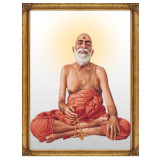
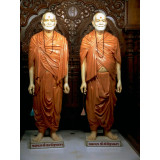
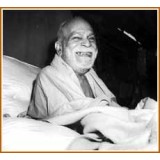
.jpg)



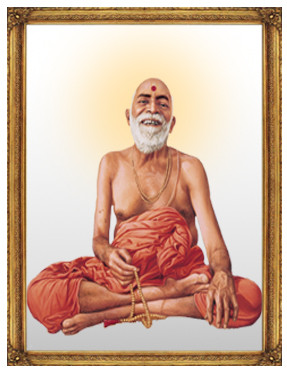
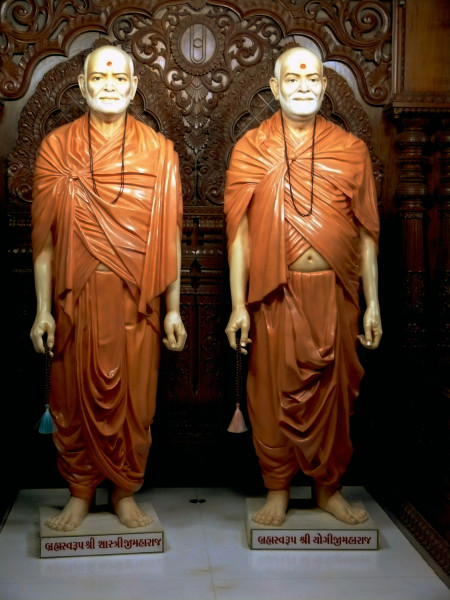
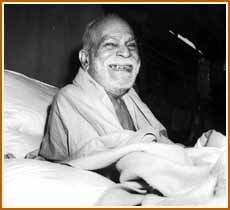

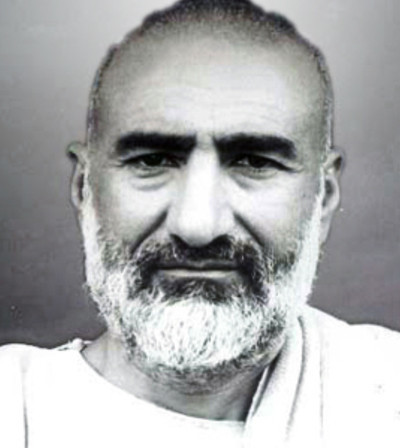
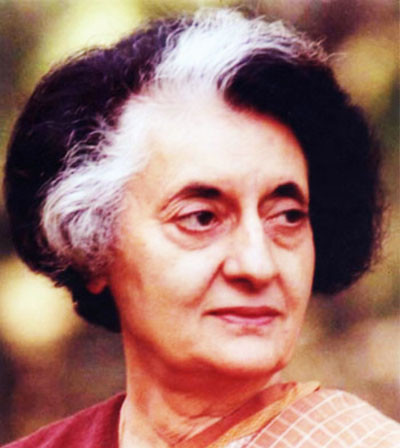
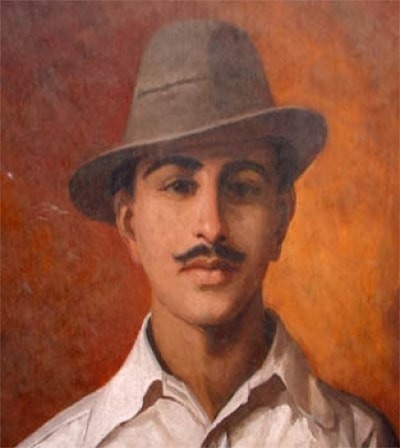
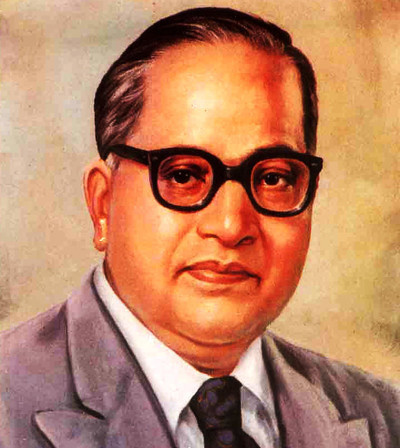
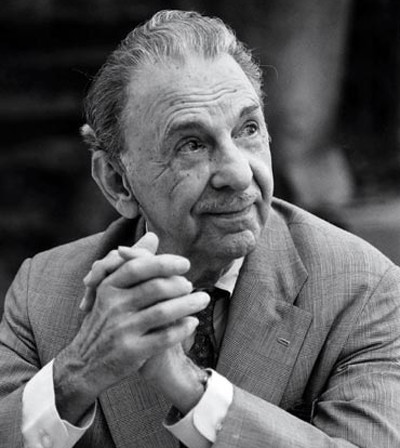
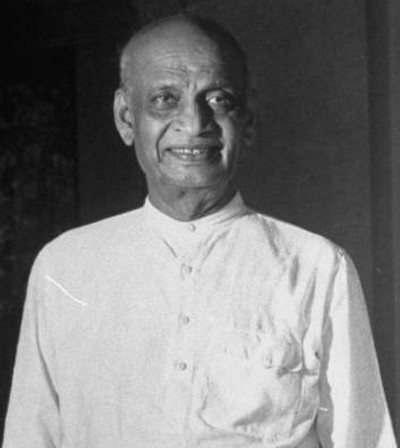
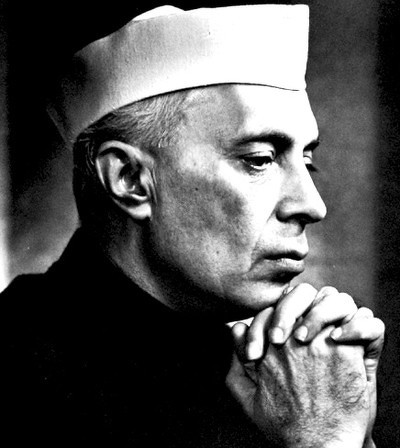
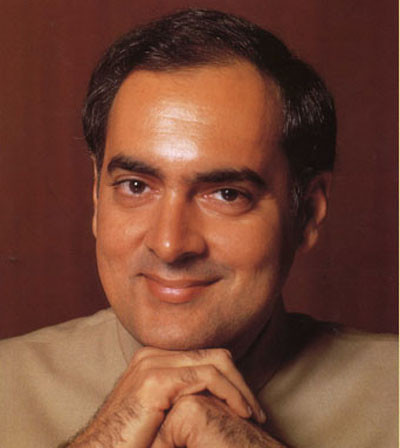
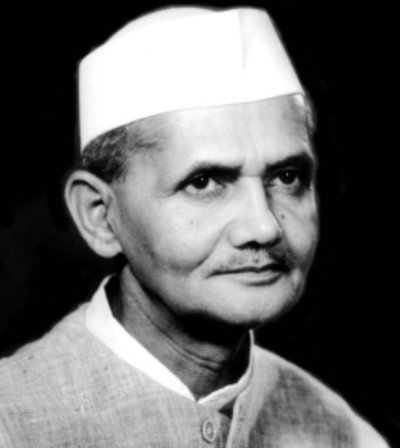

crariuddy
4 years ago
crariuddy
4 years ago